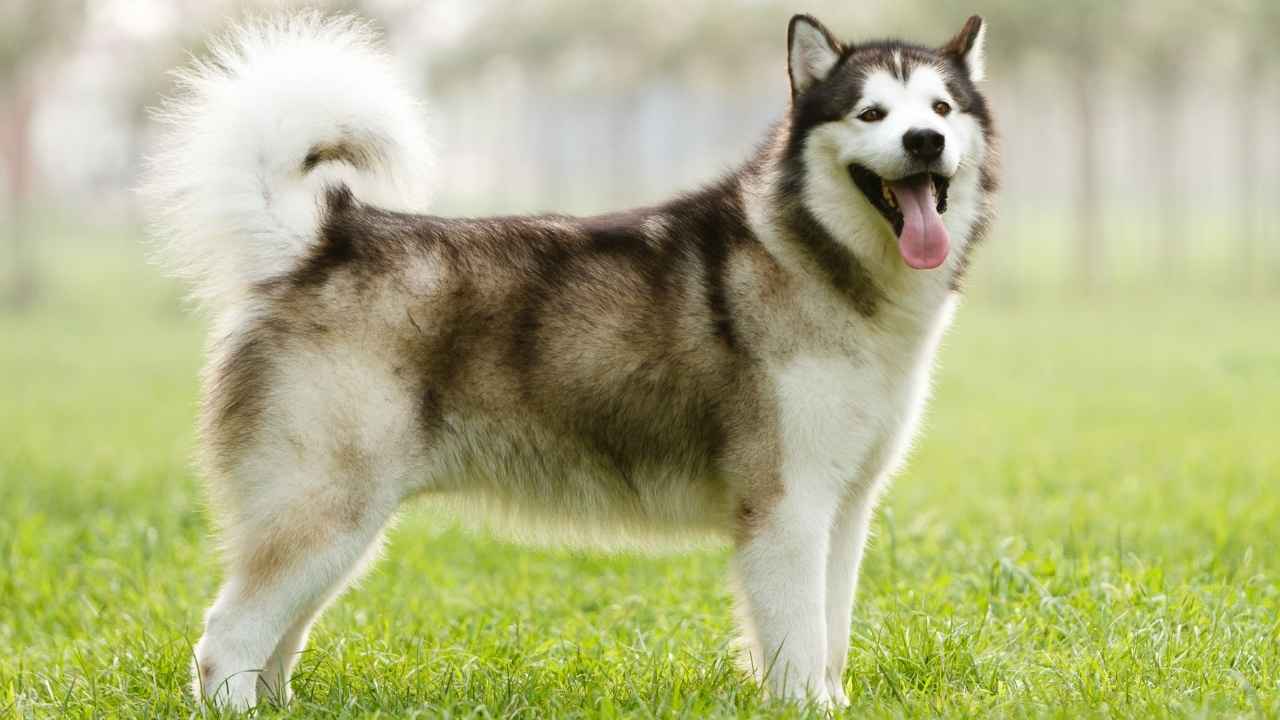While many dog breeds trace their roots to distant lands and ancient civilizations, a select few were born and bred right here on American soil. Among these homegrown canines are Native American dog breeds, distinctive in heritage, function, and character. These breeds, developed over centuries alongside Indigenous peoples, served not only as companions but also as hunters, guards, and essential working partners in daily tribal life.
Unlike the more commonly known breeds with European or Asian origins, Native American dog breeds reflect a deep bond with the land and cultures of North America. Their traits, resilience, loyalty, and independence mirror the lifestyles and environments they were raised. Though some of these breeds remain rare or have evolved significantly, their legacy endures through their modern descendants and the roles they once played in Indigenous communities.
Today, learning about Native American dog breeds offers more than just a peek into canine diversity, it’s a window into the rich cultural history of the Americas and the extraordinary animals that helped shape it.
Native American Dog Breeds
1. American Bulldog

While not an Indigenous breed by origin, the American Bulldog became a vital part of early American rural life, especially in the southern states, where they worked alongside Native and non-Native communities. The AKC describes the American Bulldog as devoted and assured.
Their strength, tenacity, and protective nature made them indispensable on farms, particularly for managing livestock and guarding property. Over time, their presence in rural areas helped them become woven into the broader fabric of American heritage.
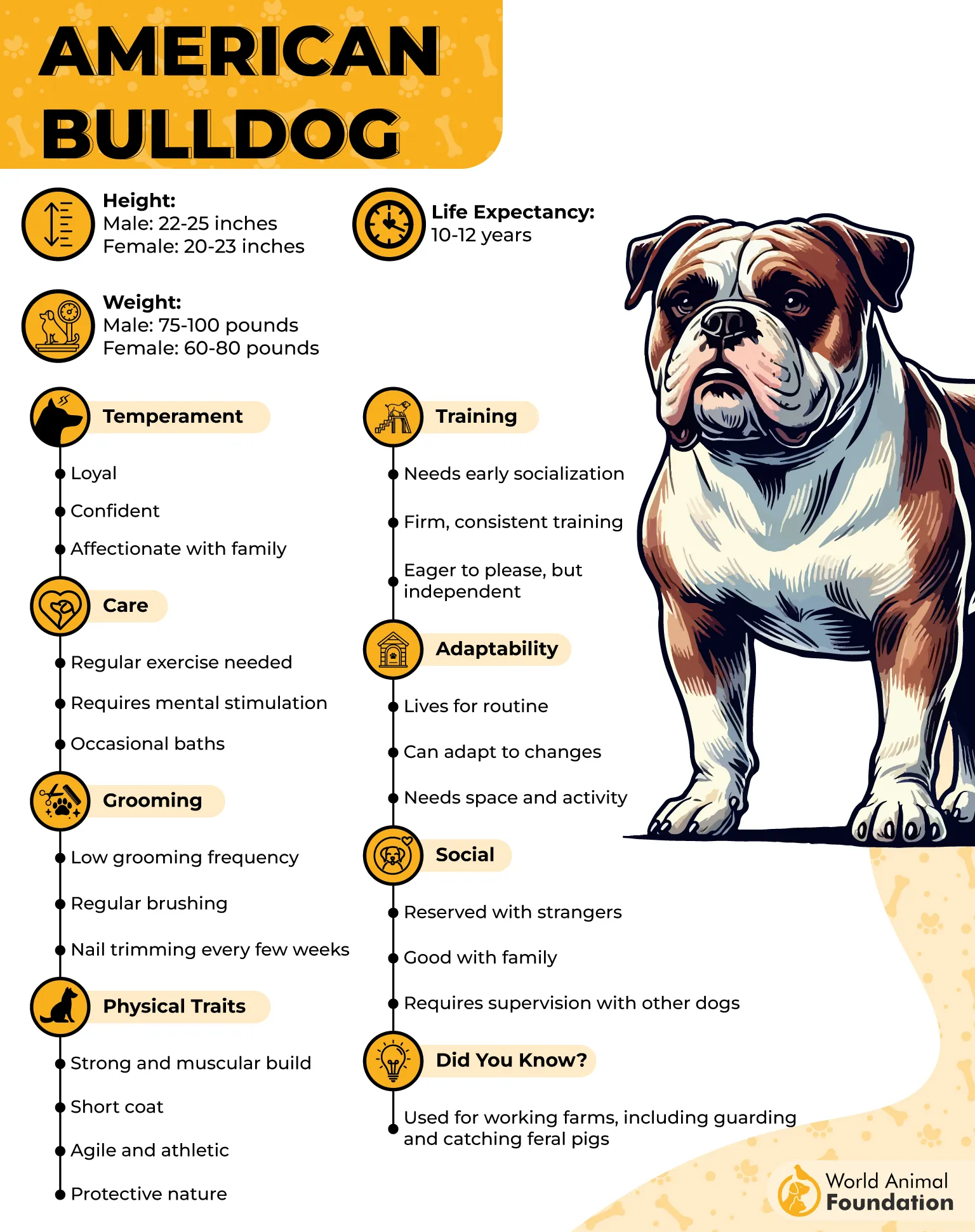
History
The American Bulldog descended from English bulldogs brought to the American colonies in the 17th and 18th centuries. These dogs adapted quickly to the demands of frontier life, where they excelled in catching feral pigs and cattle, serving both as protectors and tireless workers.
Their role as all-around utility dogs allowed them to thrive on small farms, especially in the southeastern U.S. After nearing extinction during World Wars I and II, the breed was revived by dedicated breeders like John D. Johnson and Alan Scott, who helped preserve its robust and loyal lineage.
Fun Fact: Despite their tough exterior, American Bulldogs are known for their playful, clownish personality and affectionate nature with families.
2. American Eskimo Dog
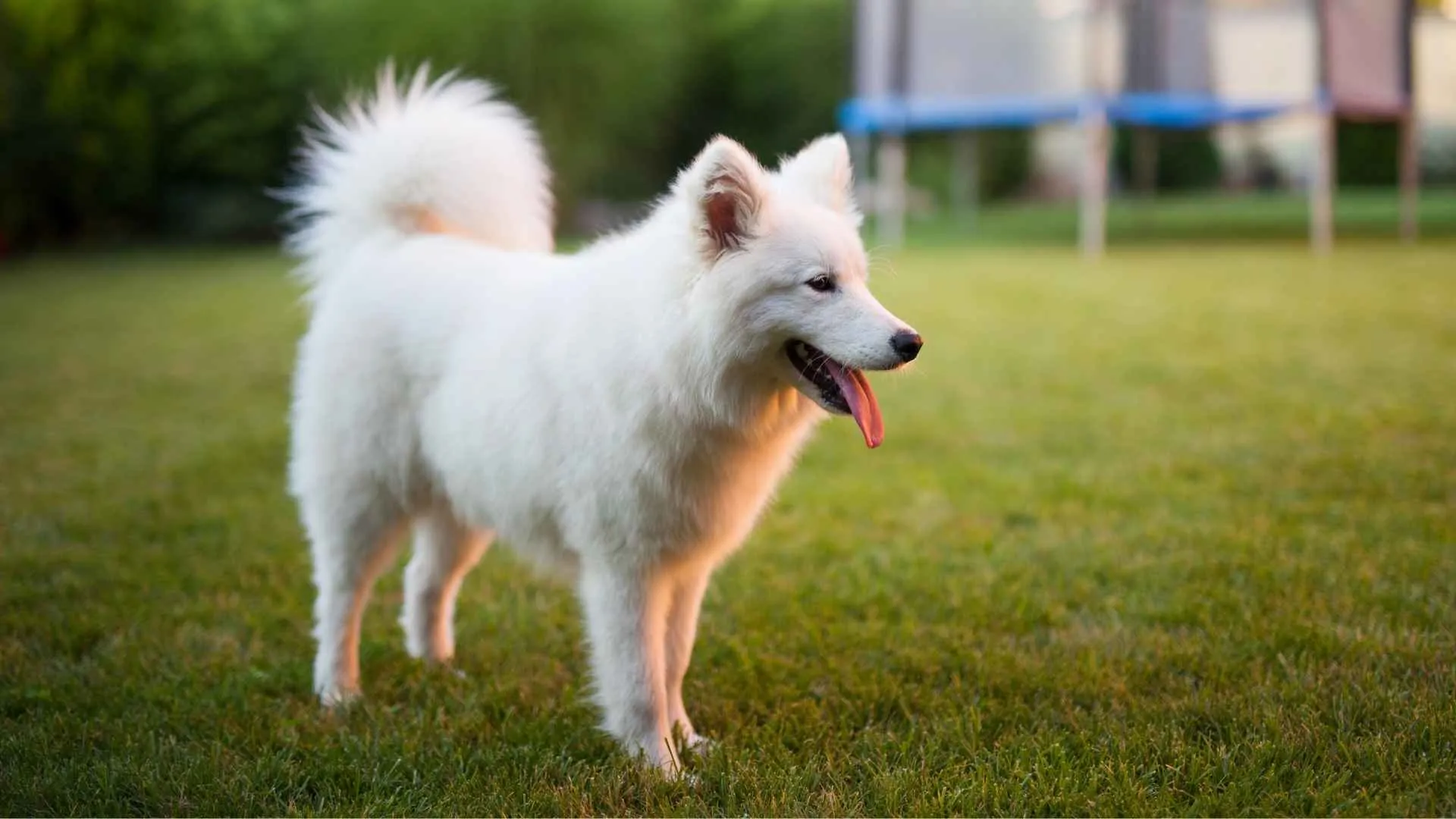
Though its name suggests Indigenous roots, the American Eskimo Dog does not originate from Native American or Inuit cultures. Instead, this fluffy, intelligent breed made its way into American households through a different path.
With its plush white coat, alert expression, and energetic personality, the American Eskimo Dog, or “Eskie,” is a striking member of the spitz family that has become a beloved companion and show dog across the country. PetMD states that the American Eskimo Dog features a medium-length double coat in white or cream. Though fluffy, their grooming routine is relatively simple.
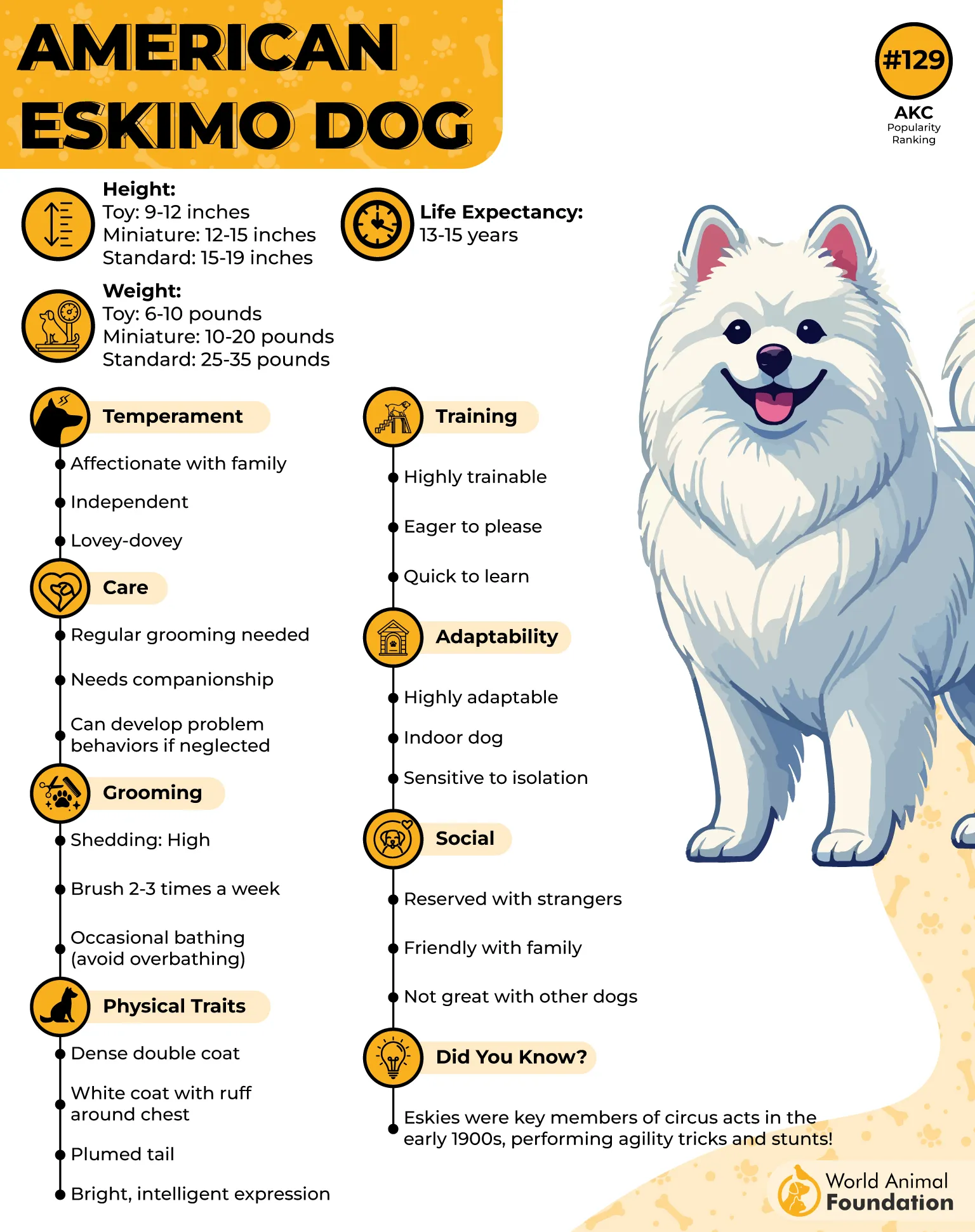
History
The American Eskimo Dog traces its lineage to the German Spitz, brought to the United States by German immigrants in the early 1800s. Initially known as the American Spitz, the breed gained popularity as a highly trainable performer in traveling circuses during the late 19th century.
Amid anti-German sentiment during World War I, its name was changed to “American Eskimo Dog” despite having no connection to the Inuit people. The breed was later refined and recognized as distinct from its German ancestors, eventually earning American Kennel Club recognition.
Fun Fact: The American Eskimo Dog comes in three sizes, toy, miniature, and standard, and was once a favorite for circus acts due to its intelligence and showmanship.
3. American Hairless Terrier
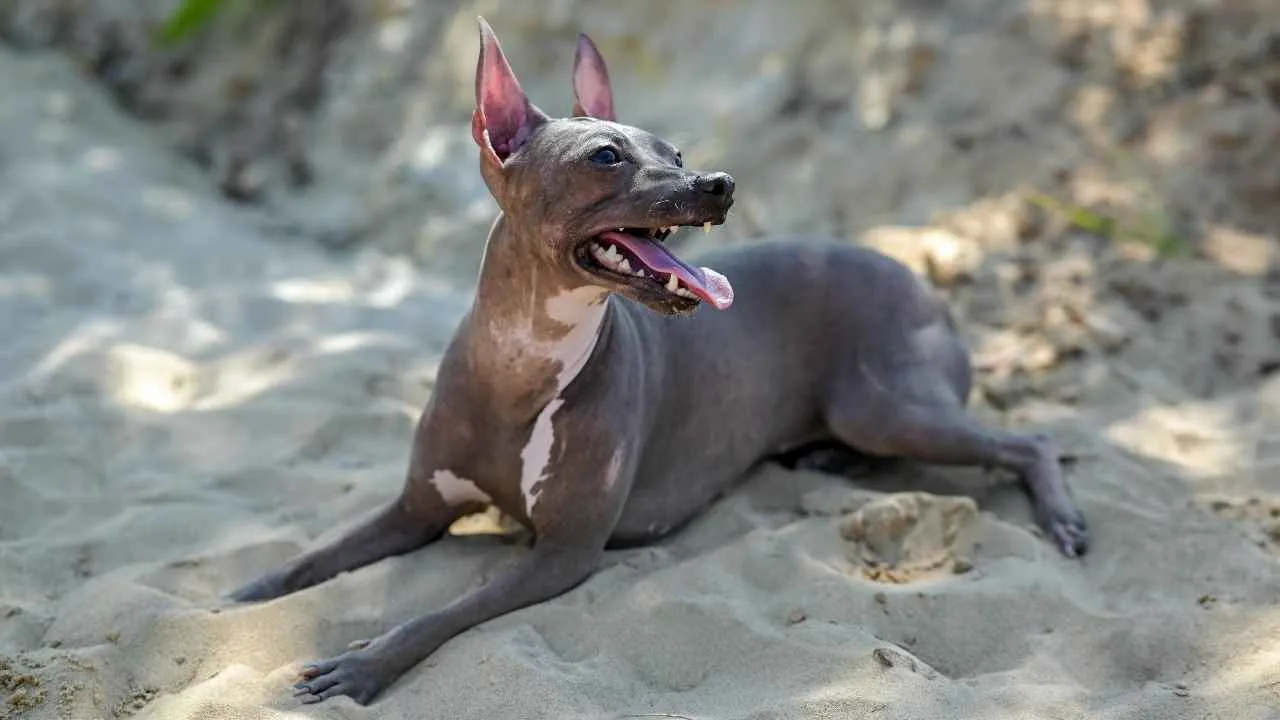
The American Hairless Terrier stands out, literally, for its unique lack of fur. WebMD reports that these dogs are lively and attentive companions. Agile, energetic, and undeniably spunky, this small terrier thrives on activity and attention.
Whether joining its human for a brisk walk or curling up for a nap on the couch, this breed loves to be at the center of family life. Its hairless quality makes it a potential match for allergy sufferers, although dander and saliva are often the true culprits.
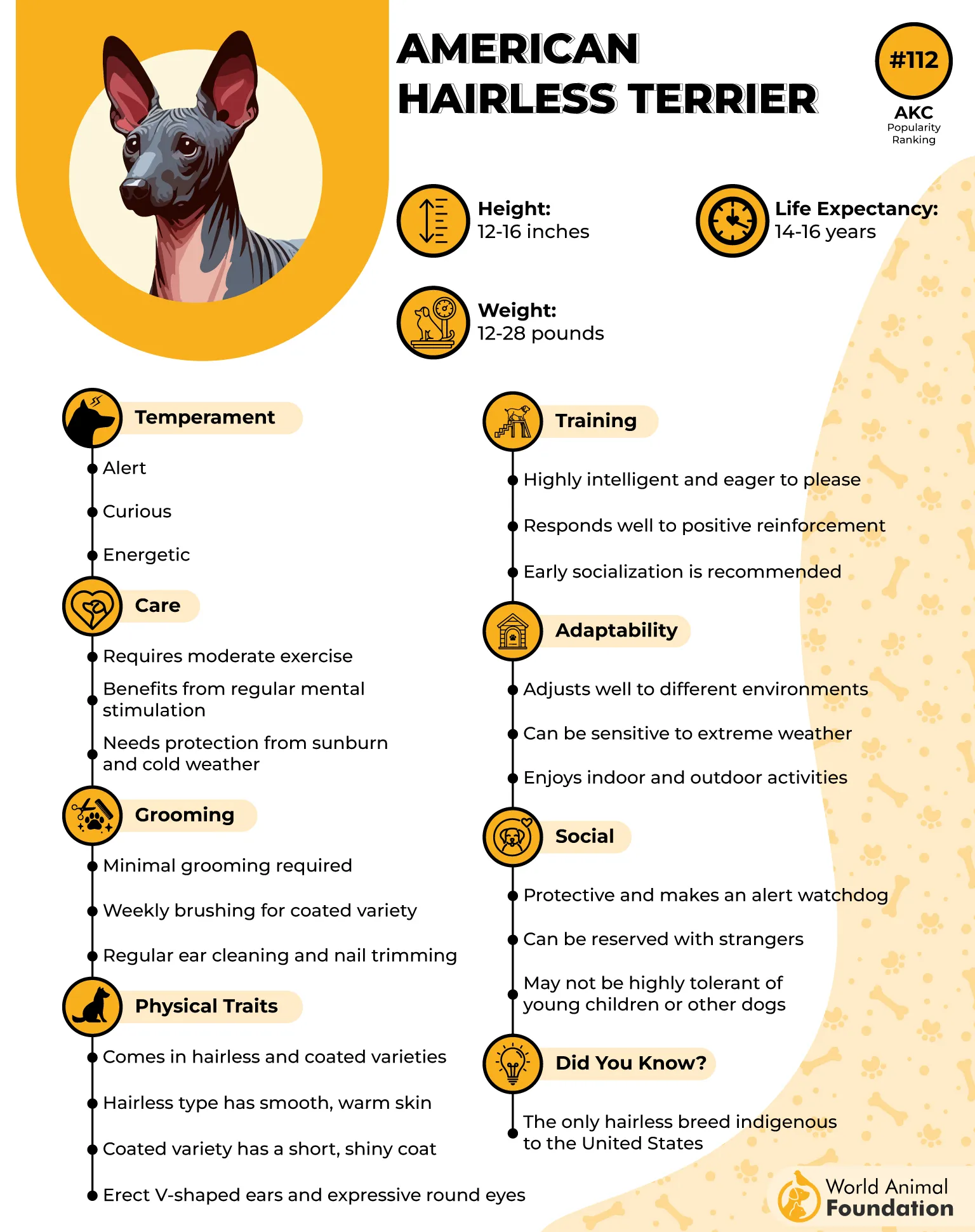
History
The American Hairless Terrier’s story began in Louisiana in the 1970s when a hairless puppy named Josephine was born to a pair of purebred Rat Terriers. Her owners, Edwin and Willie Scott, recognized the uniqueness of this pup and began a breeding program to preserve and develop this naturally hairless trait.
Through careful selection, the breed evolved, and in 2016, it was officially recognized by the American Kennel Club. As the first and only hairless breed to originate in the United States, it holds a distinct place in American canine history.
Fun Fact: The American Hairless Terrier descends from Rat Terriers and remains the only hairless dog breed developed entirely in the U.S.
4. Alaskan Malamute
Few breeds embody the spirit of North America’s frozen wilderness like the Alaskan Malamute. Britannica notes that the Alaskan Malamute possesses both a powerful build and a determined personality. This native sled dog is a true working companion, bred to survive and thrive in the harshest climates.
Known for their thick double coats, friendly demeanor, and expressive howls, Alaskan Malamutes continue to be beloved for both their capability and their loyalty. Their close bond with humans and incredible hauling ability made them essential to survival in Arctic environments.
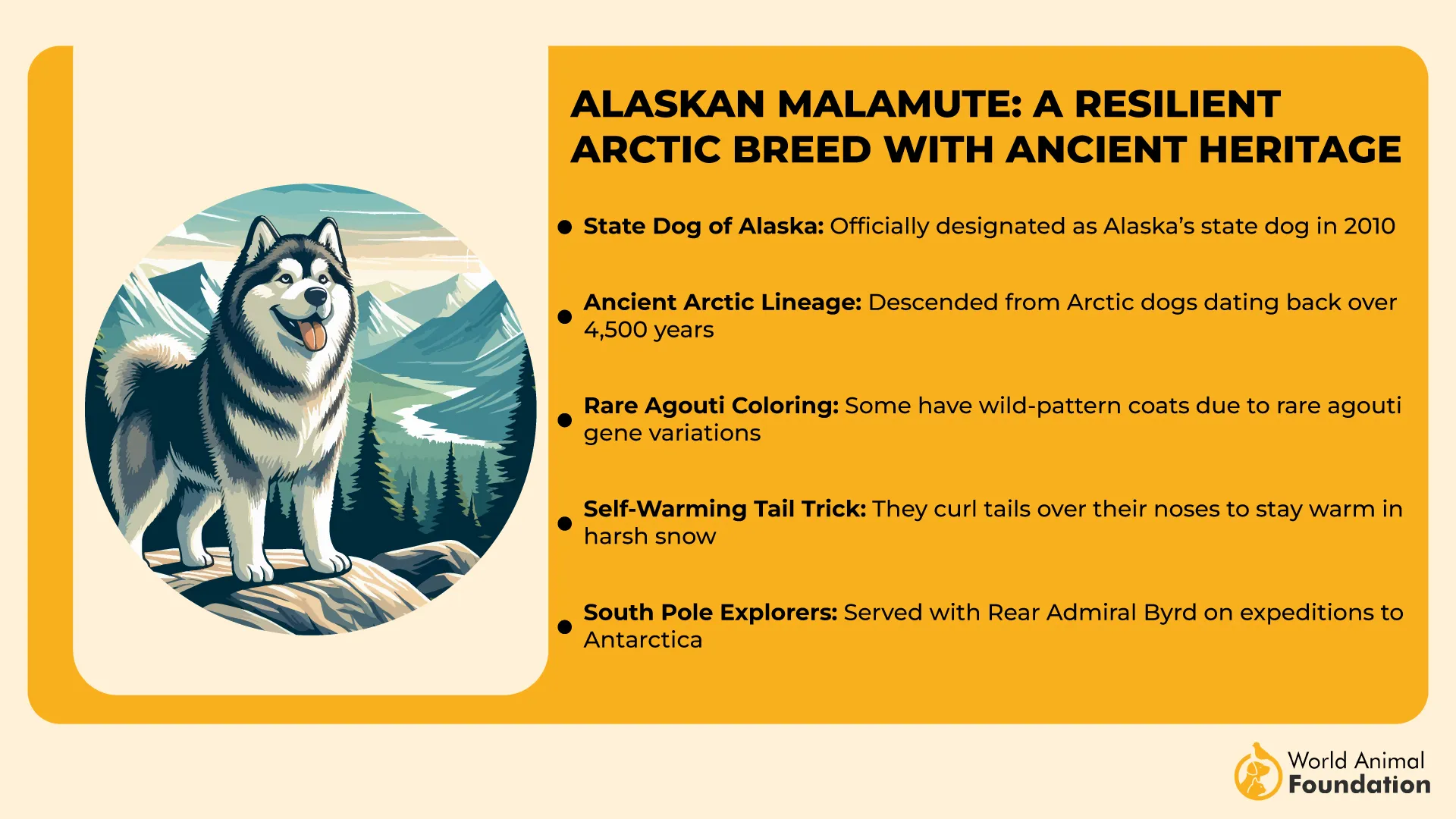
History
The Alaskan Malamute takes its name from the Mahlemiut, an Inuit tribe of Alaska that developed the breed to pull heavy sleds over long distances. These dogs likely descended from ancient wolf-dogs that migrated into North America across the Bering Strait thousands of years ago.
Throughout history, Malamutes have hauled freight for miners during the Gold Rush, assisted in Antarctic expeditions, and even served as rescue dogs in World War II. Their presence reflects a deep-rooted partnership between humans and dogs in Indigenous Arctic cultures.
Fun Fact: George Lucas based the Star Wars character Chewbacca on his own Alaskan Malamute, “Indiana”—the same dog that inspired the name of Indiana Jones.
5. American Water Spaniel
Among the few dog breeds truly developed in the United States, the American Water Spaniel reflects the needs and lifestyle of early American hunters and outdoorsmen, particularly in the Great Lakes region. With a dense, curly coat and strong swimming ability, this breed was designed for versatility, retrieving game from both land and frigid waters.
Their energy, intelligence, and eagerness to please make them excellent companions for active families and outdoor enthusiasts alike. Purina states that the American Water Spaniel is smart, lively, and willing to please, making it both a skilled hunting dog and a loyal family pet.
History
The American Water Spaniel originated in Wisconsin during the 19th century, making it one of the few native American breeds. While its precise ancestry is unclear, it likely descends from the English Water Spaniel, Irish Water Spaniel, and Curly-Coated Retriever.
Bred as an all-purpose hunting dog, it’s small size allowed it to ride in canoes, while its waterproof coat and webbed feet made it an exceptional retriever. As hunting declined, so did the breed’s numbers, but dedicated breeders helped preserve it. It was officially recognized by the American Kennel Club in 1940 and named Wisconsin’s state dog in 1985.
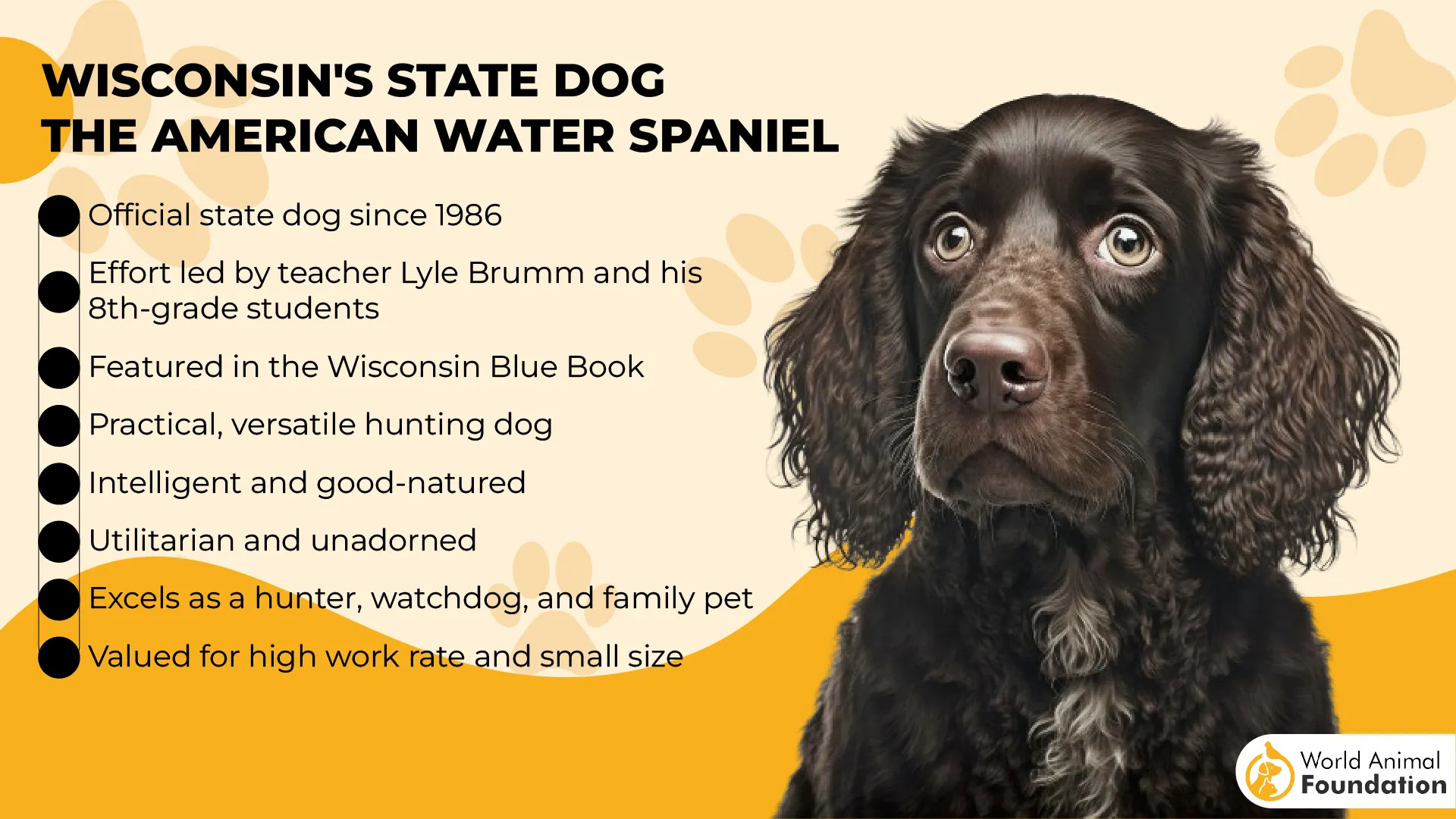
Fun Fact: This smart dog breed expertly uses its tail as a rudder when swimming in rough waters, giving it impressive control and agility in the field.
6. American Staffordshire Terrier
The American Staffordshire Terrier, often called the AmStaff, is a bold and affectionate breed that has become a staple in American households. While it shares ancestral roots with British breeds, its development on U.S. soil has earned it recognition as a distinctly American dog.
In rural and frontier communities, including those with Native American populations, these affectionate dogs were valued for their loyalty, strength, and versatility as both protectors and companions. Their even temperament and eagerness to bond made them trusted family dogs.
History
These native dogs trace their lineage back to the British Staffordshire Bull Terrier, which was brought to the United States in the 1800s. American breeders refined the breed, emphasizing a balance of strength, stability, and gentleness.
By 1936, the American Kennel Club officially recognized the AmStaff as a unique breed. Over time, it shed its fighting past and emerged as a beloved companion known for courage and devotion, particularly in American communities that appreciated hardworking, trainable dogs.
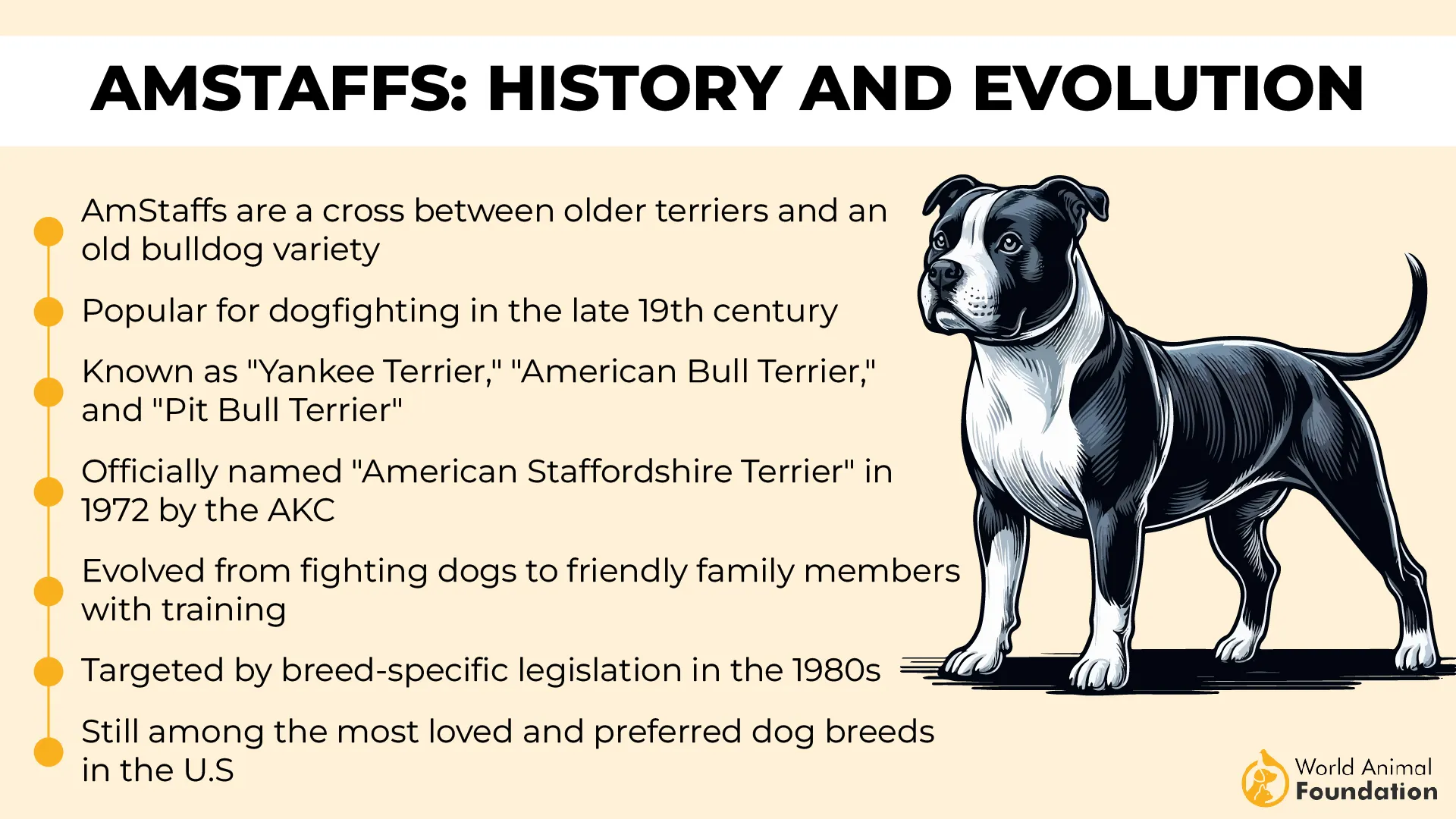
Fun Fact: Despite their muscular build and protective instincts, AmStaffs are quiet dogs that rarely bark and enjoy learning tricks and engaging in family activities.
7. Chesapeake Bay Retriever
As the only retriever breed developed entirely in the United States, the Chesapeake Bay Retriever holds a unique place among Native American dog breeds. Known for their unmatched skill in waterfowl retrieval, these athletic and devoted dogs were shaped by the environment and culture of the Chesapeake Bay region.
Their strong work ethic, loyalty, and high energy levels made them invaluable to hunters and communities along the Eastern Seaboard.
History
These loyal dogs originated in the early 19th century in the coastal areas of Maryland and Virginia. Bred by duck hunters, this breed was designed for endurance and performance in icy waters. Its lineage includes Newfoundlands, Irish Water Spaniels, and local hounds, resulting in a dog with webbed feet and a dense, waterproof coat ideal for swimming and retrieving.
Though not tied directly to Indigenous communities, the breed’s development alongside early American settlers and its adaptation to the regional landscape connect it to the broader narrative of American-bred working dogs.
Fun Fact: The Chesapeake Bay Retriever’s oily, water-repellent coat helps it stay warm and buoyant even while retrieving ducks in freezing waters.
Conclusion
Native American dog breeds represent a meaningful blend of history, purpose, and loyalty. From the farm-guarding strength of the American Bulldog to the tireless water-retrieving abilities of the Chesapeake Bay Retriever, these dogs were shaped by the unique demands of early American life. While not all were developed by Indigenous communities directly, their roles in Native and settler cultures alike reflect a deep connection to the land and the people they served.
Other fascinating breeds like the Native American Indian Dog and the Carolina Dog carry even deeper ancestral ties, thought to be descendants of dogs that lived alongside Indigenous tribes for centuries. Meanwhile, Greenland Dogs showcase the endurance shared by many northern breeds. Whether bred for protection, hunting, or companionship, these dogs are more than pets, they’re living links to North America’s rich and diverse canine heritage. Their continued presence honors traditions of resilience, partnership, and trust.


